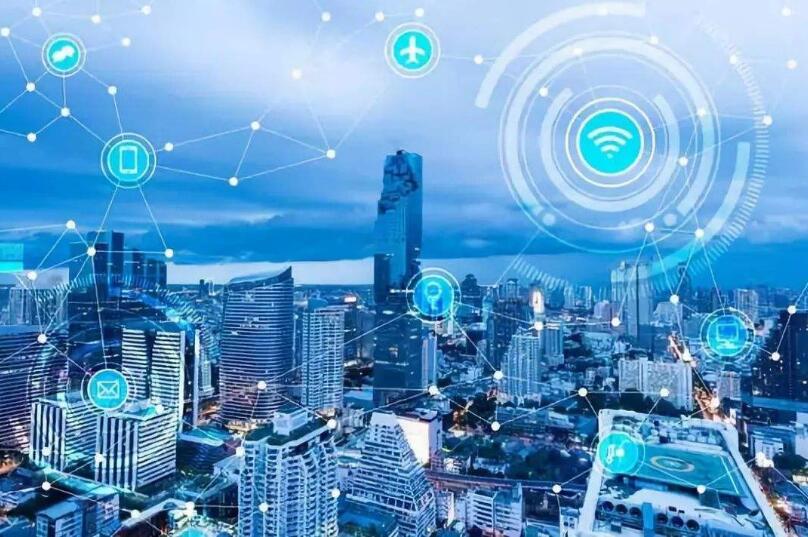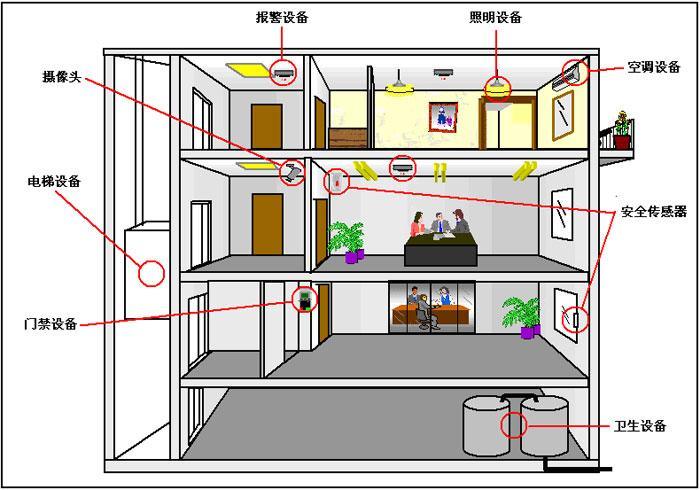
Intelligent buildings based on RFID and other Internet of Things technology
[ad_1]
Considering the current situation, people today are more demanding and impatient. They demand that everything be delivered in the shortest possible time, and their desire for comfort and convenience is increasing day by day. In order to meet people’s needs, construction operators are looking for new ways to adjust priorities to obtain customer satisfaction.
Due to modern technology, meeting people’s needs is no longer a problem, all you need is how to use modern technology appropriately. The construction industry draws inspiration from the concepts of smart cities and smart homes, and is trying to build interconnected digital buildings. Similarly, the concept of smart buildings is to provide comfort, convenience, safety and efficiency. So, what is a smart building?

Smart buildings: meaning
Use digital technology to automate, simplify and improve the structure of the building’s internal operations. Simply put, smart buildings are nothing more than transforming buildings in a way that interacts with the cloud. The infrastructure uses RFID sensors, cameras, and actuators to improve the reliability of the structure. In the event of an emergency, the building will analyze and respond accordingly.
Surveillance cameras, fire-fighting sensors, LED lighting equipment, etc. have been deployed in most buildings today. However, through the Internet of Things, buildings can share comprehensive data and help building owners gain meaningful insights, thereby improving the tenant (resident) experience and increasing the return on investment.

Smart buildings: benefits
Since smart buildings are centered on various technologies, they are no longer considered “four walls and roof”. They should actually be called “automated machines”. You can get information about available parking spaces by simply touching your smartphone; or, if there is any technical failure in the elevator, a message will be automatically sent to the maintenance staff. The opportunities are endless, let’s take a look at the specific benefits of smart buildings.
·Efficiency-RFID sensors embedded in every corner of the building will collect comprehensive data on construction work, and building operators will obtain real-time information on the activity status of the structure. Real-time analysis of overused and underused places in the infrastructure will help seamless management of space utilization.
· Predictive maintenance-in the life cycle of any structure, the maintenance of the building consumes most of the budget. However, the introduction of IoT sensors will help building operators collect fine data to gain accurate insights into technical failures (if any). The insights derived from the collected data can help structural inspectors analyze problems in real time, carry out services required for building repairs in a timely manner, and greatly reduce maintenance costs.
Energy consumption-buildings with smart meters, smart grids, automatic lighting control, temperature control and other energy management systems will help reduce energy consumption to a minimum. In addition to energy saving, smart buildings will also help save money.
·Building cleaning optimization-with the help of sensors that collect data in clean and unclean spaces, building managers can automate the cleaning process. This function helps to keep the building clean and free from disease.
Smart buildings: scenarios
Smart school-school classrooms should provide a safe and comfortable environment for teachers and students. There is no doubt that making classrooms more comfortable will improve the experience, efficiency and performance of students and teachers. By deploying IoT RFID sensors, smart gateways, people counters, actuators, cameras, smart meters, and solar panels, schools can build a “smart” building, thereby improving visibility, safety, and management capabilities, while saving money New opportunities. Schools can:
·Pay attention to temperature changes,
·Check whether the lighting is insufficient,
· Strengthen student safety,
·Reduce energy consumption, and
·Monitoring of water resources management.
Smart workplace-In an office, there will always be an employee sitting in a corner wearing a thick jacket to keep warm, while in another corner, there may be an employee sweating. The office temperature depends on many factors, including the number of employees, sunlight, and humidity. The existing air conditioning system is out of sync with employee preferences. But in smart buildings, by combining employee preferences, data collected by current HVAC systems, and machine learning capabilities, building managers will obtain temperature optimization information based on employee comfort. Employees can also control the temperature by installing apps on their smartphones. We will see a higher level of transparency, where employees can freely control the temperature in the workplace. In addition, smart parking systems, visitor management systems, energy metering, simplified cleaning, smart waste management, and thermal comfort will create a comprehensive smart environment in the workplace, thereby improving employee health, productivity, safety, concentration and work efficient. The survey shows that “improving the air conditioning system will increase employee productivity by 11%, and better lighting will increase efficiency by 23%.” Therefore, the development of smart workplaces will increase employee engagement.
Smart hospitals—providing patients with better medical facilities, comfort, care and safety is the hospital’s unshirkable responsibility. However, the Internet of Things, advanced technology, and automation provide new opportunities for hospitals to meet patient expectations while improving building connectivity. Automatically turn off lights when not needed, control room temperature according to patient requirements, send ward cleaning information, notify the technical team of medical equipment failures, monitor the usage of each room, etc. These benefits, coupled with energy saving, reliable building layout and Infrastructure optimization will make hospitals more intelligent, sustainable and full of vitality. Most importantly, the smart hospital will create an optimal environment to make patients feel more comfortable, just like at home.
[ad_2]


